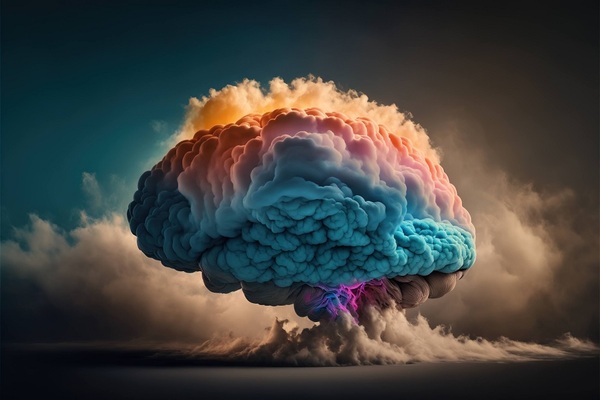
(function(d, s, id) { var js, fjs = d.getElementsByTagName(s)[0]; if (d.getElementById(id)) return; js = d.createElement(s); js.id = id; js.src = “https://connect.facebook.net/en_US/sdk.js#xfbml=1&version=v3.0”; fjs.parentNode.insertBefore(js, fjs); }(document, ‘script’, ‘facebook-jssdk’)); –>
–>
February 1, 2024
In my book, The Brain Death Fallacy, I quote neurologist James Bernat: “How the brain generates conscious awareness remains the most intractable mystery of and the greatest remaining challenge to neuroscience. As of 2018, neuroscientists have mapped many of the important connections necessary for human consciousness, but the essential neurophysiological and neurophilosophical problem of how brain tissue yields human subjective experience remains almost completely unknown.”
‘); googletag.cmd.push(function () { googletag.display(‘div-gpt-ad-1609268089992-0’); }); document.write(”); googletag.cmd.push(function() { googletag.pubads().addEventListener(‘slotRenderEnded’, function(event) { if (event.slot.getSlotElementId() == “div-hre-Americanthinker—New-3028”) { googletag.display(“div-hre-Americanthinker—New-3028”); } }); }); }
In Consciousness and Human Identity, philosopher Jerry Fodor puts it more bluntly, “Nobody has the slightest idea how anything material could be conscious. Nobody even knows what it would be like to have the slightest idea how anything material could be conscious. So much for the philosophy of consciousness.”
The traditional view of humankind is that we have a dual nature as a body-spirit unity. We have a physical body which is directed by an immaterial soul or spirit. Very few people are pure materialists, believing we are just “meat in motion.” But strangely, the notion continues that with just a little more research, we will discover how the physical brain imagines, rejoices, fears, or is ashamed. And the relatively new concept of “brain death” is the result of equating people with their physical brains. If we are our brains, when our brains stop functioning, we cease to exist.
A human person is an amazing amalgamation of thoughts, feelings, memories, insights, and perceptions. A brain is an organ that allows us to translate these spiritual qualities into actions. We are not our brains.
‘); googletag.cmd.push(function () { googletag.display(‘div-gpt-ad-1609270365559-0’); }); document.write(”); googletag.cmd.push(function() { googletag.pubads().addEventListener(‘slotRenderEnded’, function(event) { if (event.slot.getSlotElementId() == “div-hre-Americanthinker—New-3035”) { googletag.display(“div-hre-Americanthinker—New-3035”); } }); }); }
In his book, Erasing Death. The Science That Is Rewriting the Boundaries Between Life and Death, resuscitation expert Dr. Sam Parnia posits that the brain isn’t like the hard drive on a computer (which actually stores memories in itself), but is rather like the Random Access Memory (RAM), which uses items found on the hard drive to perform tasks and functions.
Philosopher Callie Joubert describes it this way: “…the soul is an agent, and the body and its parts the instruments the agent uses to accomplish things in the world. In Romans 6:13 it is written: ‘[A]nd do not present your members as instruments of unrighteousness to sin, but present yourselves to God as being alive from the dead, and your members as instruments of righteousness to God.’” [Emphases in the original.]
If the brain is who we are, suffering a stroke causes not only the loss of physical function, but the loss of part of our humanity. None of us would deny the humanity of a stroke victim, but this same logic leads to categorizing people with severe brain damage as being somehow “dead.” Conveniently, this  removes their civil rights and allows their bodies to be plundered for their valuable, viable organs.
removes their civil rights and allows their bodies to be plundered for their valuable, viable organs.
Dr. Robert Truog wrote about “brain dead” patient Jahi McMath in the American Medical Association (AMA) Journal of Ethics:
For readers unfamiliar with what patients who are brain dead look like, it is likely that Jahi looked very similar to other sick children in the intensive care unit (ICU): her eyes were closed, she did not respond to her mother’s voice, and she needed a ventilator to breathe. Visually, it would not seem unreasonable for Jahi’s mother to question why clinicians were telling her that Jahi was dead; other children in the ICU that looked just like Jahi were getting better. Nevertheless, when Jahi’s mother asked about the discrepancy between what she saw and what she was being told, one clinician allegedly responded, “What is it that you don’t understand? She’s dead, dead, dead.” This response seemed to imply that Jahi’s mother was simply unable to understand what was obvious to everyone else. In fact, however, Jahi’s mother was perceiving the situation clearly.
Jahi McMath went on to live for nearly five more years, and began responding to her mother’s voice and following commands. Before her death, two neurologists testified that even though she had been “correctly” diagnosed according to the brain death guidelines of the time, she was no longer brain dead but in a minimally conscious state.
‘); googletag.cmd.push(function () { googletag.display(‘div-gpt-ad-1609268078422-0’); }); document.write(”); googletag.cmd.push(function() { googletag.pubads().addEventListener(‘slotRenderEnded’, function(event) { if (event.slot.getSlotElementId() == “div-hre-Americanthinker—New-3027”) { googletag.display(“div-hre-Americanthinker—New-3027”); } }); }); } if (publir_show_ads) { document.write(“
In October of 2023, the American Academy of Neurology (AAN) published an updated brain death guideline, which makes it easier to declare a person brain dead. This new guideline allows people with continuing brain functions to be declared dead. It also substitutes the term “permanent,” for the legal requirement of “irreversible.” The AAN defines “permanent” to mean the brain injury will not resolve spontaneously, and that medical interventions will not be used to fix the problem. Thus, under this new guideline people can be declared “dead already” and their organs harvested because their doctors do not intend to treat their condition.
Because we are not our brains, brain function or nonfunction does not define who we are, much less whether we are dead or alive. With ongoing medical care, people can recover from a brain death diagnosis. Jenny Hamann overheard her medical team discussing the “fact” that she was brain dead while lying helpless on a ventilator. Unable to move or speak, she had to listen to her doctor saying that her husband was being “completely unreasonable” by not donating her organs. She made a complete recovery, and went on to become a nurse so as to offer other patients better care than she received.
Brain death is a legal fiction, a lie that must be exposed. Research into better care for brain injuries has been set back by over 50 years because we have been using these people as organ donors. The physician-patient relationship has suffered because doctors are being trained to see people with severe brain injuries as “as good as dead,” rather than valuing their humanity.
You are not your brain, and brain death does not equal death. Protect yourself from a false “brain death” diagnosis by refusing to be a registered organ donor. But this is not enough. The 2006 update to the Uniform Anatomical Gift Act (UAGA) now mandates that if a person has no documented refusal to donate (and the family cannot be contacted) the coroner, medical examiner, or hospital administrator can donate your body or organs on your behalf. By documenting your refusal to donate in your advanced directive and electronic medical record and by carrying a “refusal to donate” wallet card, you can avoid becoming a living victim of “brain dead” organ harvesting. If a person you know was declared dead by the neurological standard and had organs harvested, then we recommend pursuing litigation. Very few (if any) people meet the legal standard of “irreversible cessation of all functions of the entire brain, including the brain stem” [emphasis mine]. Their cause of death was the removal of their organs, which violates the ethical principles of non-maleficence and the Dead Donor Rule (DDR), and a medical negligence case can be brought against physicians and a hospital. Medical institutions must prove that “all functions of the entire brain” have reached the point of “irreversible cessation” prior to declaring death, an impossible standard to meet, but that’s the law of the land — at least for now.
Heidi Klessig MD is a retired anesthesiologist and pain management specialist who writes and speaks on the ethics of organ donation and transplant. Her work may be found at respectforhumanlife.com.
Image: Gratis Graphics/Unreal
<!–
–>
<!– if(page_width_onload <= 479) { document.write("
“); googletag.cmd.push(function() { googletag.display(‘div-gpt-ad-1345489840937-4’); }); } –> If you experience technical problems, please write to [email protected]
FOLLOW US ON
<!–
–>
<!– _qoptions={ qacct:”p-9bKF-NgTuSFM6″ }; ![]() –> <!—-> <!– var addthis_share = { email_template: “new_template” } –>
–> <!—-> <!– var addthis_share = { email_template: “new_template” } –>





